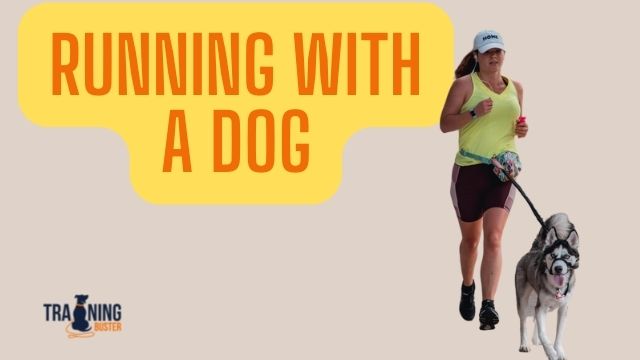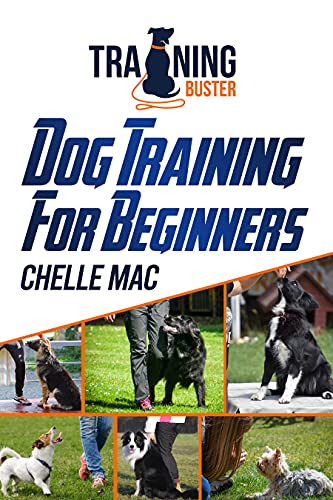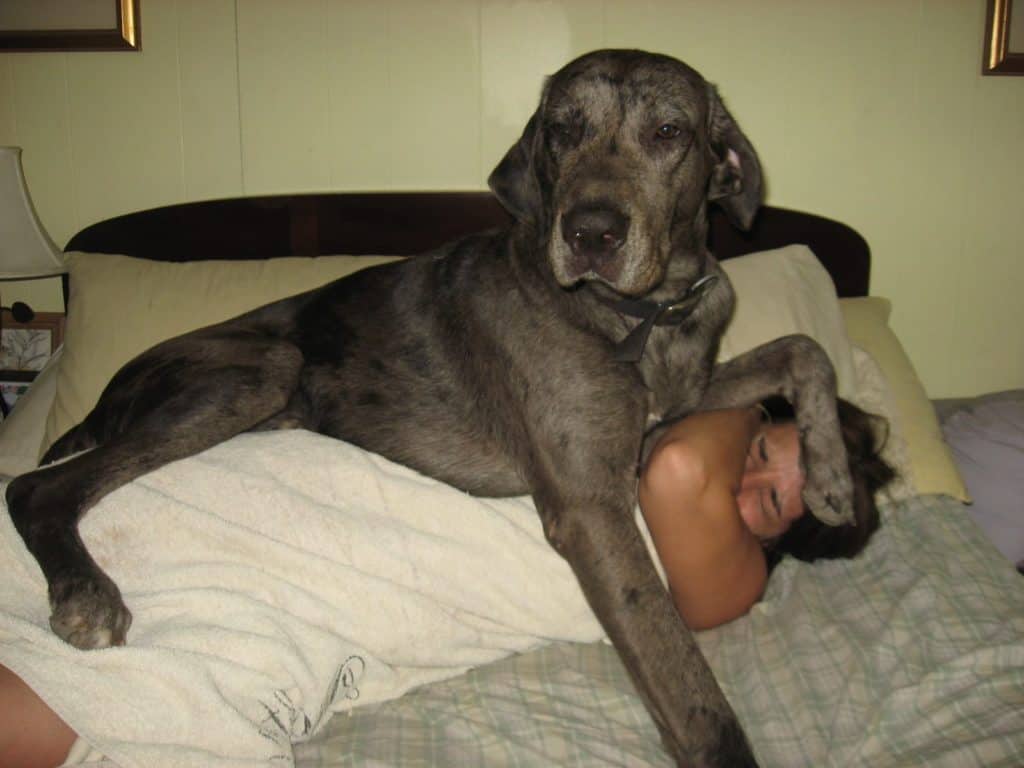
Running with a dog safely is important, find out how in this article.
Being a dog owner comes with a lot of responsibility, including making sure that your pet leads a healthy and active lifestyle. Some people may choose to take their dogs running with them so that they can both enjoy their fair share of exercise at the same time.
Many people enjoy running as physical activity. Whether you are already a runner or you wish to start running, you may want to include your dog.
How young can my dog be to start running on the road
When a puppy is young, the growth plates on the end of its bones will still be in the early stages of development. As the puppy grows older, these areas of developing cartilage tissue harden and become stronger.
Therefore, if a puppy is made to do particularly arduous exercise, such as going for a lengthy run on a lead along a hard surface such as pavement, this can result in the dog sustaining long-term injuries.
According to the American Animal Hospital Association, a puppy’s bones will become fully developed at around nine months.
While it’s certainly safe to let your puppy run in short spurts, running for exercise is not healthy for growing puppies. Because your puppy’s bones are still growing, the stress and fatigue brought on by any kind of distance running can lead to injury, potentially causing permanent damage. Most dogs will be able to start running between 9-12 months of age.
Larger dog breeds tend to mature more slowly. Ask your vet when your puppy is mature enough to start running with you.
Importance of your dog breed when Running with him Safely
There are typical breeds that are known to be good running partners such as the Labrador, Golden Retriever, and Siberian Husky. Other good breeds include Vizsla, German Shepherd, and Dalmatian.
Dogs that should remain in your furry cheering section are Brachycephalic, or short-nosed dogs: Pug, English Bulldog, Boston Terrier, Pekingese, Shih Tzu, and the like.
These breeds are all too anatomically compromised to be able to withstand long-distance and even short-distance running. They overheat even faster than other dogs and can’t take in enough oxygen to accommodate strenuous exercise.
Keep your dog hydrated when exercising
Dogs don’t sweat like humans; they release their body heat through panting and through the pads of their feet. They overheat much faster and with less effort than humans do.
A good rule of thumb is puppies require 2 to 3 times the amount of water you need. This also can change according to the time of year and size of your dog.
Make sure your dog has access to plenty of cool, fresh water while running. If you cannot bring water with you run in a public area where water is available for dogs.
Even a sunny day in the 70s may be too hot for your dog. During warmer months, consider early morning runs with your dog before the heat of the day.
If your dog shows signs of heatstroke or heat exhaustion, seek immediate veterinary attention. Also, do not run on hot asphalt with your dog. If it’s too hot for you to touch, it’s too hot for your dog’s paws!
Training your dog to run safely
Before running, make sure your dog is well-trained. Your dog should be able to walk on a loose leash and know how to properly behave during a walk and running. Be certain that your dog knows basic commands like stop sit and stay.
Also, ensure that your dog is well-socialized before running. It’s important that your dog does not react adversely to other people and dogs, cars and trucks, wild animals, and other distractions.
If you think your dog is not yet ready, stick with walks. The first day you go running with your dog is not the day to go the distance. Begin with about 10 minutes at a slow to moderate pace, watching your dog’s reaction to the exercise increase. Add 5 to 10 minutes to the run every few days if your pooch tolerates it well.
If your dog is slowing down on its own or begins to limp, it’s time to stop running and walk home.
Increase your pace as your dog can tolerate it. When in doubt, go for short and slow runs until your dog builds up the endurance for more. Don’t overdo it and risk injury!
It’s best to keep your dog on a leash when running. When running, you should follow the same basic rules of walking: pick up after your dog, have control of your dog, respect others, pay attention. Most of all, have fun! Dogs that already walk nicely on a leash will transition to running with ease.
A dog that pulls can be challenging. The first thing to do is shorten the leash. If you have a 6-foot leash, and you let your dog get in the habit of walking ahead of you, he’ll continue to pull. Instead, keep the leash short enough that your dog is by your side, 2 to 3 feet at the most. Start with a 10-minute run and then add 10 minutes each week until you reach your desired time or distance.
Gradual build-up allows for the muscles and connective tissue to adapt and grow to the activity without injury. With time, your dog will adapt to your pace. This can be frustrating in the beginning. Many dogs want to go much faster than you are capable of and you find yourself trying to hang on to the leash.
Other dogs may lag behind and appear distracted, which leads many dog owners to think their dog doesn’t like to run. In both cases, the dog simply doesn’t know what he’s supposed to do. You have to teach him how to be a runner. With a little patience and time, the two of you will be running side-by-side at a good pace.
The rate of his run greatly depends on the individual dog. In general, a good progression would be to increase a half-mile every few weeks and always monitor your puppy during and after any increases.
Any prolonged lethargy after a run, noticeable soreness, limping, or difficulty in getting up or lying down are good indications you’ve pushed your pup too far.
Other signs could be a reluctance to continue in the run or refusal to even start a run. Your pup may slow down or even stop altogether mid-run. These are all signs that should be heeded.
Here are some running kits for you and your dog
- Portable Dog Water Bottle & Bowl
- Ultra Paws Durable Dog Boots, 4 count
- Reflective Bands for Arm/Wrist/Leg
5K and 10K training plans for you and your dog
There are many 5K and 10K running plans to help you build distance and pace. You can try one of those or start out with something even easier. To start, figure out your average mile time. Use a local track or mark the distance in your car and then time your mile run at a comfortable pace.
Once you have a comfortable pace, take that time and multiply it by the miles to get your run time for a 5K (3.1 miles) or 10K, (6.2 miles). Example: 11-minute mile x 3.1 miles = 34.1 minutes. Begin running with your dog 10 minutes every other day for a week. Then, the next week add another 10 minutes to your running time. Continue training every other day.
The third week add another 10 minutes. The fourth week add another. Continue this process until you reach your projected time. Once you reach your projected time, keep running with your dog.
It will take time and patience to get your pup ready, but with a little guidance and practice you’ll end up with one of the best running partners you could hope for. Keeping your dog distraction-free while running
The best way to keep your dog from being distracted mid-run is to teach a solid “leave it” cue. When you are first starting out, always carry some yummy treats such as hot dogs or cheese to reward him for keeping his attention on you or the task at hand. This is where practicing polite leash manners in the very beginning comes into play.
If your dog learns that you are the best thing around (or at least that you carry the best stuff) you will have much more success keeping his attention in higher distraction areas.
There are no guarantees, however. Even the best-trained dogs may have a hard time resisting that fuzzy bunny running across the neighbor’s lawn.
Carrying a small squeak toy and/or irresistible food is your best defense against distraction or at least get him back on track when he is faced with such temptation.
Warm-ups & post-run massages
Adequate water and rest are obvious but don’t forget stretching before and after a good run. Teach your dog to allow you to extend his legs, stretch his neck and curve his spine in both directions.
Hold the pose for a good 5 to 10 seconds to accomplish a good stretch. Do this before and after every run, as you would do your own stretching, and you will help keep your dog in great shape to continue running.
A good post-run massage goes a long way toward easing muscle soreness as well. Use light fingertip pressure in circular motions along the spine muscles and all four legs, even his toes.
If your dog is sensitive about his feet make sure he gets a yummy treat each time you touch this area.
As with human runners, foot care is vital. Always check your pup’s pads for small scratches, tears or foreign objects.
Keep his feet as clean and dry as possible. You can even try using booties if your dog will accept them; at the very least use a good pad cream specifically for dogs. Be cautious of how often your dog runs on hard surfaces. If possible, find a route that will allow your dog to run on grass at least some of the time.
Keeping his joints healthy is very important in contributing to a long-running career.
Consider giving your pup a joint supplement and/or fish oil with his food to support joint health.
If your dog doesn’t want to run
Not all dogs are cut out for running. Your dog might be happier on a walk where he or she can explore the world with their nose. Some dogs cannot handle the physical exertion of running or they do not have the endurance for anything more than the short run.
Many dogs are too sensitive to the heat. Do not run with a brachycephalic dog (short muzzle) such as a bulldog or pug. These dogs simply cannot cool themselves properly and will easily overheat on a run, even in cooler temperatures. If your dog is unable to handle a safe run, it’s best not to run with your dog.
You are only setting yourself and your dog up for injury and disappointment.
A common mistake is jumping right into long runs with your dog. This is something new for them, and like humans, they need to build up their endurance. Choose areas that are easy to run in, have access to water, and provide safe paths for you and your dog.
No matter your dog’s age, it is important to communicate with your vet before starting a new exercise program for your dog. Your vet may be able to detect minor health issues before they become worsened by running.
Remember that your dog may not show any signs of illness until the health problem becomes more severe. Do your furry friend a favor and have your vet clear your pooch for running first.
Get a copy of our top-selling new book on Amazon, Dog Training for Beginners. Get it on Paperback or Kindle here.

Related questions
How do I start running with my dog?
Very slowly! In fact, the first thing you should work on is polite walking leash manners. Get your puppy comfortable walking next to you, and as he progresses inefficiency, increase your speed.
Practice in low-distraction areas first like your kitchen or living room and then as he progresses, take the practice sessions outside until he can speed walk/slow jog politely up and down your driveway and then in front of your house then down the block, etc
How do I keep my dog safe from street dogs?
Keep a watchful eye on your run. Carry yummy treats on your runs and throw a handful on the ground in front of an oncoming un-leashed dog.
Hopefully, the food will distract the dog long enough to allow you and your pup time to run by without incident. Consider carrying an air horn if there is a specific dog set on causing trouble with your puppy.


